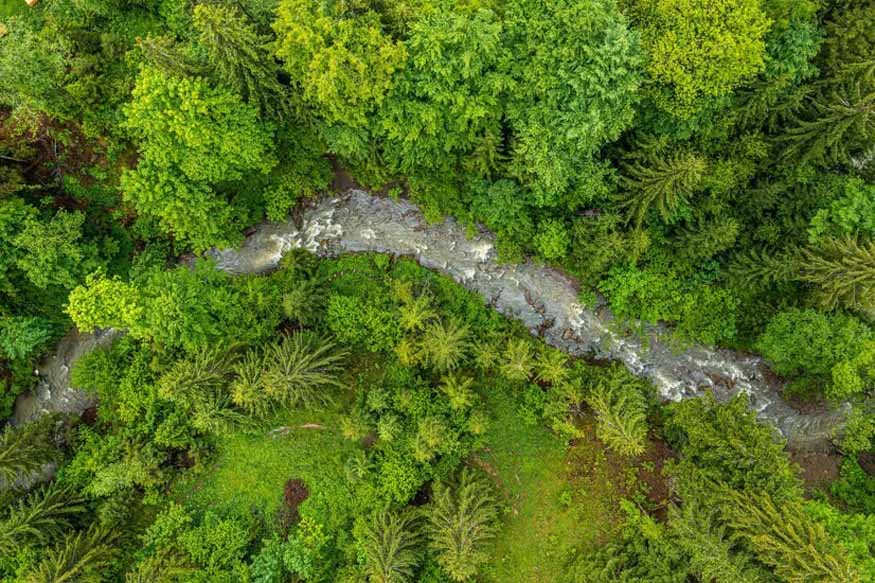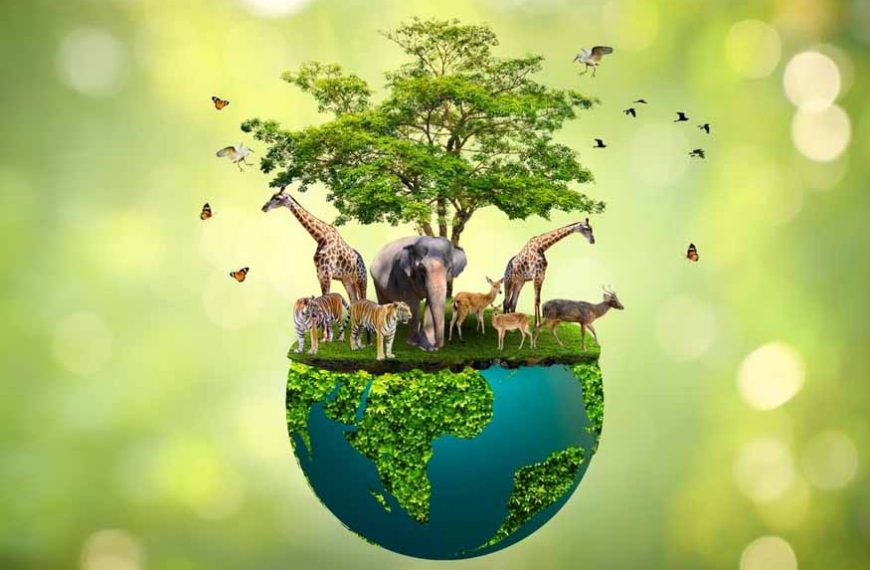Biodiversity encompasses all living organisms and the ecosystems in which they live. It must be noted here, that the term also includes the interaction of species with each other and the environment in which they live.
In recent years, human activities that include but are not limited to, the emission of greenhouse gases and deforestation, have destroyed the natural balance and begun causing an erosion of our planet’s biodiversity. Millions of plant and animal species have been threatened, several of which have already become extinct.
The best way to define biodiversity for kids is to explain it to them in a fun and simple way. Depending on the age of your child, one must take a tailormade, cautious approach when it comes to choosing activities and words that will help educate them about the dangers faced by the planet. This is so that you can help them become aware of the same, without alarming them.
There are three layers of biodiversity: genetic, species, and ecosystem
- Genetic biodiversity
- Species biodiversity
- Ecosystem biodiversity
refers to the diversity of genes inside individual organisms and groups of species. Populations with the highest genetic variety have the best chance of surviving environmental change. Larger populations tend to have more genetic variety.
refers to the number of different species (richness) as well as the number of individuals within each species. Generally, ecosystems with high species diversity are more stable than those with low species diversity. In a low-diversity ecosystem, the loss of even one species can cause significant upheaval.
refers to the diversity of ecosystems within a given region. A location with a greater variety of ecosystems can support a wider range of living organisms than one with less. People limit ecological diversity by converting natural areas into homes, companies, or other constructions.
Human activity poses the most serious dangers to biodiversity loss, including population increase, which causes habitat loss, resource overexploitation, and global warming. Invasive species are also a major contributor to biodiversity loss.
Importance of Biodiversity

Biodiversity for kids is best explained by enlightening them about how important it is. Children need to know that biodiversity is essential for continued survival on this earth and for all species of animals and plants.
The truly great thing about biodiversity is that it provides us with things that we need in our daily lives, like air, food, and water. Moreover, it also helps to regulate our Earth’s climate and its numerous ecosystems.
15 Ways to Teach Biodiversity to Kids
Here are the top 15 ways in which kids can be taught ‘all things biodiversity’! The biodiversity examples are also given below.
- A Walk in The Park
- Read books about animals
- Making a bird feeder
- Visiting a zoo
- Creating a garden
- Creating a collage of animals and plants
- Staging a play about different animals
- Create your Pond
- Going for a hike
- Create a model bird nest
- See documentaries about animals and their ecosystems
- Explore your Backyard
- Recycling and Composting
- Create your Creature
Getting your child to discover interesting things about fungi, plants, and even insects, is quite literally a ‘walk in the park’! Being up close and personal with nature in your local park makes all the difference to those young, impressionable minds.
One of the best biodiversity activities for children, this one helps them learn about animal habitats and become more empathetic and aware of animals in general.
The power of this activity is twofold. Kids will learn to recycle everyday objects like plastic bottles to make those bird feeders, and also identify the different species of birds that come to feed. Biodiversity for kids taught in a fun way!
Not only can kids get to see animals in zoo enclosures, but they can also learn a lot about them through some cool educational programs and exhibits. A great way for kids to learn the importance of biodiversity.
When looking to define biodiversity for kids, it’s important to show them examples in real life. Have them plant seeds in the garden and when those plants grow, discuss with your children how they are different from the plants we eat.
6 Learning more about their favourite species
Biodiversity activities for kids entail loads of learning. What better thing to learn about, than their favourite species of both plants and animals? Learning more about them will garner a deeper appreciation of nature in general.
Another great way to stress the importance of biodiversity in children’s minds is to have them create a collage of their favourite species of animals and plants. Let them hang it on their bedroom walls, as a constant reminder of how important biodiversity is.
This one’s a truly fun way for kids to learn all about the wonderful biodiversity in the world. Have each of them enact the favourite animal of their choice, and put up a show in their support.
Yes, you can create a pond in your backyard! Have your child fill a large container with water before placing some rocks and gravel in it at varying heights. Leave it in the garden and over the next few days, you will be amazed at the kinds of creatures that find their way there.
Note: Only fill it with rainwater, not tap water that contains chemicals.
Set off on an exciting nature trail of your choice with your child, in search of plants and animals, some of which you both might not have seen before.
Not all birds build their nests in trees, and it’s a great idea for kids to make a model bird nest so they can understand more about how birds take care of their little ones.
Animal documentaries can be as engaging as those cartoons your child might be obsessed with. Watching these, they will learn far more about their favourite animals than they might have imagined.
You don’t have to go all the way to your local park to explore wildlife when you can do it right in your backyard! Make a map of the backyard with places like ‘Bug Zone’ written on it, to make it more interesting for your kids.
A biodiversity example: Take a close look at the ‘Bug Zone’ and explore the behaviour of those little creatures.
Teach your kids well about the processes of recycling and composting. This will help them garner an understanding of why they are so important and how they create a positive impact on biodiversity.
This one’s great for the smaller ones. Have them create the creature of their choice, first by making body parts like the face and legs, and then sticking them on one by one.
We at EuroKids are most conscious of the grave threat posed to biodiversity, especially in our day and age. The good news is, that we are armed with sufficient knowledge about how humans can resolve the biodiversity crisis, and we endeavour to apprise your children of the same.
For informative and accurate articles on all things related to your new born-toddler’s development, growth, health and nutrition, follow EuroKids Blogs and do check out our nationally recognized preschools – EuroKids for the first step in your kid’s educational journey!















